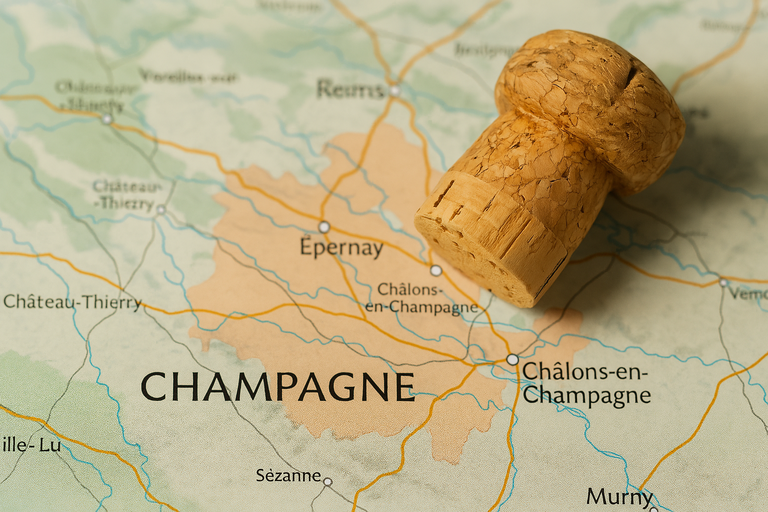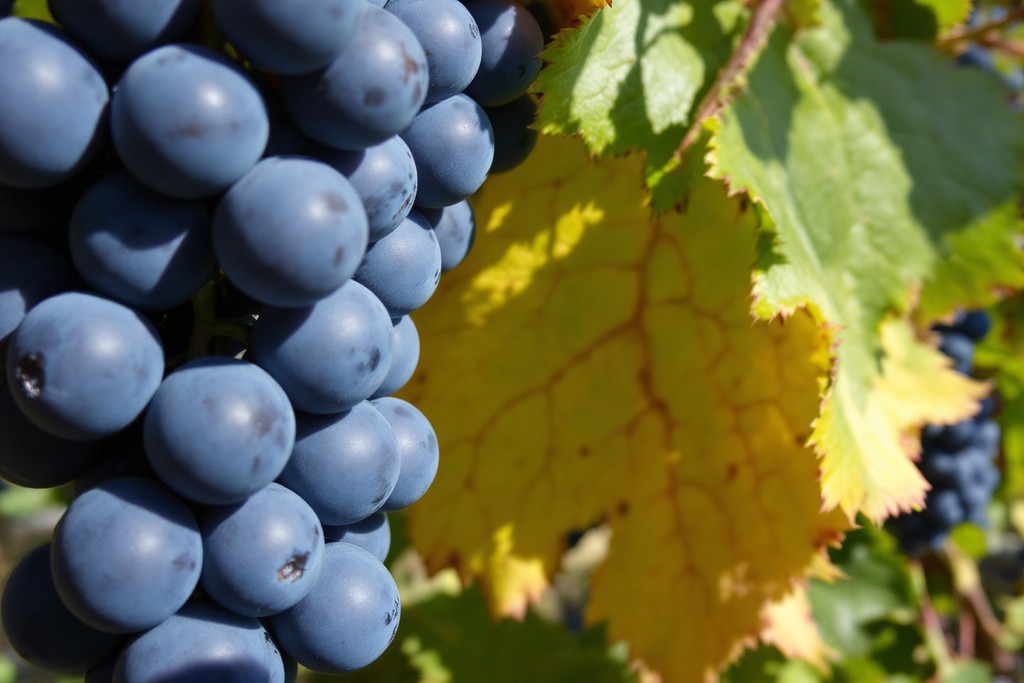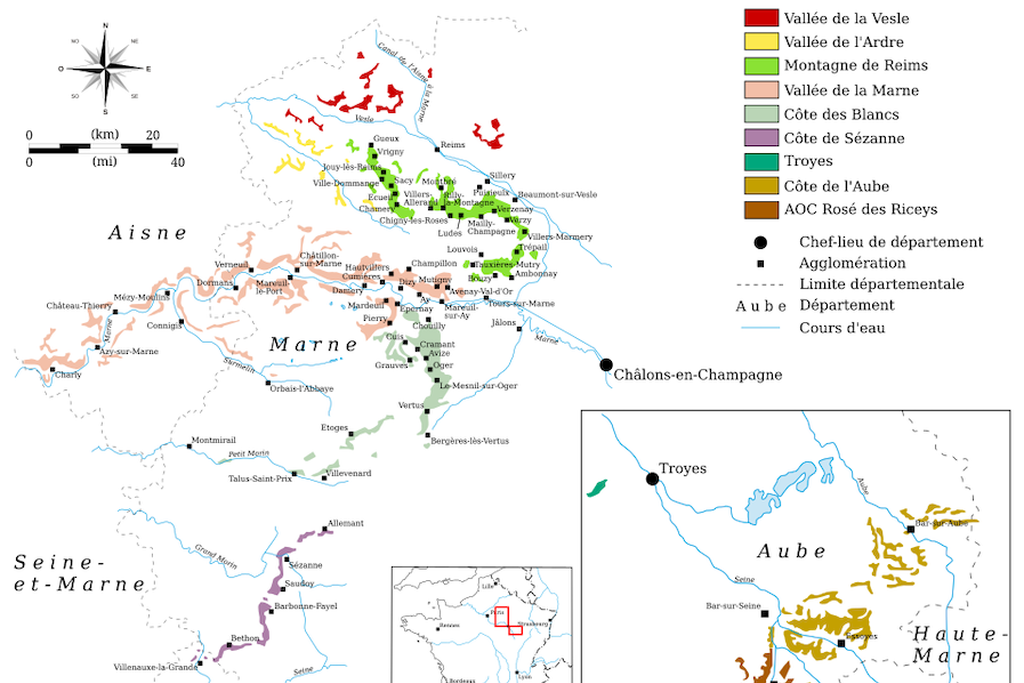
The Champagne region, famous for its globally renowned sparkling wines, has a fascinating and complex history related to the delimitation of its boundaries. Since Roman times, vineyards have thrived there thanks to particularly favorable geographical and climatic conditions for viticulture. However, it wasn’t until the 19th century that the geographical contours of the region began to be formalized. Before that, Champagne vineyards were spread over large areas, and viticultural practices varied considerably. The need for precise delimitation arose with the global rise in popularity of champagne, leading to pressure to standardize practices and preserve quality. In 1927, a decree officially delimited the Champagne production area, based essentially on historical, geographical, and climatic criteria, encompassing departments such as Marne, Aube, and Aisne, among others. Over time, this delimitation has evolved multiple times to include initially excluded territories or adjust boundaries in light of scientific discoveries and viticultural practices. Throughout the decades, these adjustments have only reinforced the identity and specificity of the region, ensuring that each plot contributing to champagne production meets stringent criteria. Territorial disputes have also played a crucial role in this evolution. The famous ‘Champagne Wars’ episodes in the early 20th century illustrate the tensions between producers and the importance of boundaries for both economic and qualitative reasons. These internal conflicts have sometimes led to legal and administrative revisions to better regulate production and eradicate fraud, while preserving the product’s authenticity. Today, the geographical delimitation of the Champagne region is not only a historical marker of its vineyards but also guarantees quality and authenticity for producers and consumers alike. This complex and rich history reflects the attention given to protecting and cultivating an exceptional viticultural heritage.
The Champagne region is characterized by unique geography and geology that decisively contribute to the quality and particularity of the wines produced. The geographical delimitation of this region is based on several essential criteria, including altitude, soil composition, and the exposure of the vineyards. Champagne soils are mainly composed of chalk, marl, and limestone, elements that give the grapes unique qualities. Chalk, for example, offers excellent drainage capacity while retaining the necessary moisture for vines during dry periods. It also contributes to minerality, a prized characteristic in champagne tasting. The hilly topography of the region further allows for good sun exposure, promoting optimal ripening of the grapes. Altitude also plays a crucial role in delimiting the winegrowing zones. Located at an average altitude of 100 to 300 meters, the region benefits from a favorable microclimate, reducing the risks of spring frosts and protecting the vineyards from extreme climatic conditions. Well-exposed slopes, particularly those facing southeast, capture maximum sunlight, essential for photosynthesis and grape maturation. Furthermore, geographical delimitation takes into account the ancient tradition of terracing. Some parts of the vineyards have been shaped for centuries to optimize exposure and protection against the weather. The management of slopes and hillsides is designed to maximize water capture and mineral incorporation by the vine roots. Hydrological parameters also play a role in this delimitation. Watercourses, such as the Marne, Aube, and Seine rivers, play a role in modulating the local microclimate, limiting temperature differences between day and night. This thermal regulation is essential for maintaining the acidic balance of the grapes, a characteristic of Champagne wine. These geographical and geological criteria are rigorously studied and periodically reassessed. This scientific and methodical approach ensures that the zones included in the Champagne region are truly those likely to produce wines meeting the demanding standards of the appellation. In summary, the geographical delimitation of the Champagne region is the result of a complex convergence of natural and human factors, carefully analyzed and regulated to perpetuate excellence.

The Champagne region enjoys a particularly distinctive climate, a unique set of atmospheric and meteorological conditions that profoundly influence local viticulture. This Champagne climate, characterized by a combination of oceanic and continental climates, plays a crucial role in grape maturation and, consequently, the exceptional quality of champagne. Winters in the region are generally cold and relatively wet, while summers tend to be moderately warm. The interaction between these two climate types creates an environment that slows down grape maturation, thus preserving high acidity, one of the essential prerequisites for producing quality champagne. Indeed, acidity is fundamental for giving champagne its characteristic freshness and liveliness. Precipitation is well-distributed throughout the year, with an annual average of 650 to 700 mm. This level of rainfall is sufficient to keep chalky soils moist without exceeding the water needs of the vines. Nevertheless, producers must constantly monitor these levels to avoid problems such as gray rot, a formidable enemy for grapes. Perhaps the most striking criterion is the average annual temperature, which is around 11°C. This relatively constant coolness is a valuable advantage for Champagne viticulture. The long cool periods allow grapes to develop complex aromas and achieve slow and regular ripening, essential for ensuring a quality harvest. Spring frost is a constant risk that can affect young shoots. Winemakers have thus developed various techniques to protect the vines, ranging from installing frost towers that stir the air to prevent frost formation to using heaters or anti-frost candles to warm the vineyards. These methods are essential to prevent crop losses and ensure production continuity. Another climatic specificity is the wind, moderate but present throughout the year. These light breezes contribute to vine health by reducing ambient humidity, limiting cryptogamic diseases like downy mildew. By promoting good aeration of the vines, they also allow better fruit ripening. In summary, the climatic specifics of Champagne are not just environmental conditions but play an active role in forming the terroir. The unique combination of moderate temperatures, regular precipitation, and tempered climatic risks shapes the inimitable characteristics of Champagne wines. This subtle and complex interaction between climate and viticulture is one of the fundamental reasons why the Champagne region maintains a consistently high quality in sparkling wine production.
The geographical delimitation of the Champagne region is not a simple cartographic exercise; it has a profound and lasting impact on the production and quality of champagne. This delimitation ensures not only a precise origin but also a rigorous framework for viticultural practices, which helps maintain the high standards associated with the famous appellation. One immediate consequence of this delimitation is the creation of a strict legal framework that governs the use of the ‘Champagne’ designation. Only wines produced within the defined boundaries can bear this name, thus ensuring protection against fraud and imitation. This rigorous framework helps maintain the global reputation of champagne, ensuring that each bottle meets precise and recognized quality standards. Champagne production is also influenced by the restrictions imposed on plot yields. The geographical delimitation sets maximum yield rates per hectare, forcing winemakers to focus their efforts on quality rather than quantity. For example, in 2020, the yield rate was set at 8,000 kg of grapes per hectare, a measure that promotes optimal fruit maturation and uniform quality of the final product. Furthermore, viticultural practices are carefully regulated. Methods of pruning, spacing between the vines, and even manual harvesting are regulated to ensure that the vines receive necessary care and that grapes are harvested when ripe. These specific requirements directly influence grape quality, and by extension, champagne quality. The geographical delimitation also impacts the diversity of terroirs within the Champagne region. Different sub-regions like the Montagne de Reims, the Côte des Blancs, or the Vallée de la Marne, each with their geological and climatic specifics, contribute to the variety and complexity of produced champagnes. Winemakers can thus exploit each terroir’s particularities to create unique and distinctive blends, enriching the gustatory range offered by the region. From an economic perspective, the geographical delimitation also provides appreciated stability. It allows for long-term planning of investments and viticultural techniques while ensuring some predictability of yields. This stability also benefits consumers, who can expect consistently high quality from year to year. The importance of this delimitation goes beyond regional boundaries; it also influences international markets. The recognition of the ‘Champagne’ designation as a protected geographical indication (PGI) worldwide contributes to establishing its reputation and creating an added value that few other wines can claim. In summary, the geographical delimitation of the Champagne region is much more than just a line on a map. It is the foundation on which an entire wine industry rests, ensuring the quality, authenticity, and diversity of Champagne wines. This delimitation and its associated regulations are essential for preserving the excellence that makes this prestigious wine region renowned.

Protecting the controlled designation of origin (AOC) Champagne represents a major challenge for the region and its producers. This appellation, recognized and respected worldwide, is not only a guarantee of quality, but also a symbol of tradition, know-how, and authenticity. Its protection is crucial to maintaining these values and ensuring that each bottle of champagne meets the strict criteria that make it an exceptional product. One of the main threats against which the AOC Champagne must be protected is counterfeiting. With the global reputation of champagne, numerous attempts are made to produce and market counterfeits, imitations, or sparkling wines that usurp the designation. These lower-quality products risk tarnishing the prestigious image of champagne and deceiving consumers. To counter this, legislative measures and legal actions are regularly implemented, both nationally and internationally, to protect the designation. Another challenge is controlling the extension of the AOC’s geographical area. With growing pressure to increase production due to high demand, some producers might be tempted to claim the inclusion of new areas in the AOC’s delimitation. However, this expansion must be meticulously evaluated to ensure that the new lands possess the geographical, geological, and climatic characteristics that meet AOC requirements. Uncontrolled expansion could dilute champagne’s quality and specificity, which would be detrimental in the long term. The protection of the AOC Champagne also extends to viticultural and winemaking practices. The specifications of the AOC are extremely rigorous, defining cultivation methods, yields, vinification, and aging techniques. These strict standards ensure not only the final product’s quality but also the perenniality of the terroir and traditional methods. Non-compliance with these criteria can result in the loss of the appellation for offending producers, thus underscoring these rules’ importance for champagne’s reputation. An additional challenge is preserving heritage and terroir. Champagne’s wine lands are unique and irreplaceable. Modern agricultural practices must be reconciled with a concern for sustainability and environmental respect. Initiatives such as sustainable viticulture, integrated pest control, and reforestation programs help preserve the richness of the Champagne terroir for future generations. Local biodiversity, fauna, and flora are treasures to protect to ensure the sustainability of Champagne viticulture. Finally, the economic dimension of protecting the AOC cannot be neglected. The ‘Champagne’ designation is a major commercial asset, generating billions of euros in revenue each year and employing thousands of people. The protection of the AOC ensures a high added value to the region’s products, contributing to local economic dynamism and the recognition of ancestral know-how. In conclusion, the challenges of protecting the controlled designation of origin Champagne are multiple and complex. They encompass legal, economic, environmental, and cultural dimensions, all essential for ensuring the sustainability and authenticity of champagne. Through constant vigilance and concerted efforts, it is possible to preserve and strengthen this prestigious appellation, a symbol of excellence and tradition.
Necessary cookies are absolutely essential for the website to function properly. This category only includes cookies that ensures basic functionalities and security features of the website. These cookies do not store any personal information.
Any cookies that may not be particularly necessary for the website to function and is used specifically to collect user personal data via analytics, ads, other embedded contents are termed as non-necessary cookies. It is mandatory to procure user consent prior to running these cookies on your website.